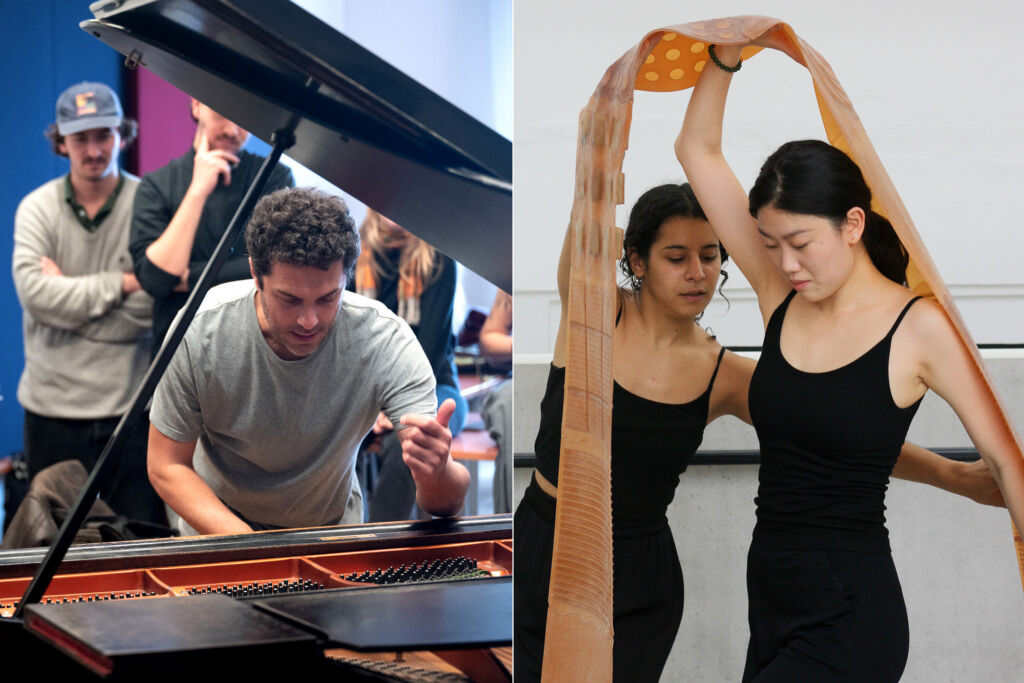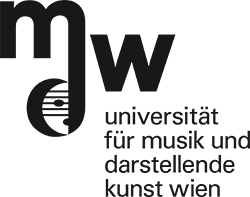An innovative educational programme representing the mdw and TU Wien in the Austrian Pavilion at Osaka’s Expo 2025.
“Trans-Bodied Knowledge” is an artistic research project led by Efilena Baseta and supported by the Austrian Science Fund’s PEEK programme for arts-based research (grant no. AR 802-G) in which a technologically oriented university—TU Wien1—is collaborating with an artistically oriented university—the mdw—in an attempt to generate unique insights by blurring the boundaries between science and art.
Last year, educators from both institutions worked in a transdisciplinary manner to create a unique educational programme for architecture students called “From Space to Wearables”. Architecture is a highly creative field of study that has changed drastically over the past two decades due to the increasing use of digital design software. Students learn this software very early in their studies and are consequently taught to design on a matterless and scaleless 2D screen, with their perception of space and materiality being trained less and less. In this way, the human body is becoming detached from the creative process.
The proposed educational programme therefore placed its focus on wearable design, since wearables—being objects that can be attached to the body—are things of the greatest physical intimacy. This decision allowed the design process and its result to relate strongly to all of our senses. The course paid particular attention to the importance of the sense of hearing as well as haptics in the context of spatial perception and design, with a series of consecutive steps being followed in which various media were used to transform space into wearables.

The first step concerned the transformation of an image into sound. Taking into account how students of architecture might be unable to read musical scores but quite familiar with graphics, the students were asked to improvise on the piano for up to 2 minutes in response to graphic notation by Anestis Logothetis under the supervision of Christos Marantos, who teaches piano at the mdw’s Department of Composition Studies and Music Production. Analysing these graphic scores gave rise to new perspectives and associations that enriched the students’ creativity. Using all parts of the piano (e.g., its strings, keys, and body), they familiarised themselves with the instrument and explored the various sounds produced by its different materials, thereafter translating the elements of the graphic scores into sound. The wide range of materials in play opened up their touch-mediated perception and afforded them a feeling of being the instrument rather than just playing on it.
In a second step, Georg Misch (a professor of film sound at the mdw’s Department of Composition Studies and Music Production) introduced students to the technique of worldizing. The piano improvisations that had been developed were initially recorded with close miking in order to exclude room acoustics, allowing the architecture students to experience the procedure of a recording session as players of their own improvisations. These recordings were then played over loudspeakers in multiple spaces at the mdw Campus (such as the courtyard or the Sound Theatre’s foyer), in the process being re-recorded and hence enriched by the varied physical acoustics of these spaces. At the conclusion of this process, the students recognised the importance of acoustics in architectural design.
In a third step, the students synthesized sensory inputs from their worldized recordings into design ideas, which the subsequent final steps saw transformed into drawings and then materialized by way of analogue and digital fabrication techniques at the Three-Dimensional Design and Model Making research unit of TU Wien under the guidance of its faculty. The resulting wearables are “instruments” that, once attached to the body, can alter their users’ kinaesthesia and sense of touch, thus also altering their spatial perception. The fact that these wearables were inspired and designed via the activation of all the senses becomes apparent in their strong haptic effects on humans. Both the wearables and the worldized piano improvisations were experienced by numerous visitors to a participatory exhibition held as part of the mdw’s KlangBildKlang festival in June of 2024.
The multi-sensorial process of experimental learning developed and realised in the abovementioned course was selected by the Austrian Economic Chamber as an innovative educational programme. As such, it has become the subject of a video featuring the attendant teaching process that is now being shown from April through October at the Innovation Lab in Austria’s pavilion at Expo 2025 in Osaka, where millions of visitors are expected.
The team of the artistic research project “Trans-Bodied Knowledge” will itself be travelling to Japan to visit the Expo thanks to support from TU Wien and the mdw’s International Office. They will then go on to present their work at other academic institutions such as the University of Tokyo, Kyoto Institute of Technology, and Hiroshima Institute of Technology.
The course itself is being continued in the current academic semester, with a new group of TU Wien architecture students experiencing the first group’s haptic wearables and transforming them into multisensorial performances. This new group’s presentation will take place in the Sound Theatre, part of the mdw Campus’s Future Art Lab, on Friday, 27 June. The exact time will be announced in the mdw’s calendar of events. Both iterations of this research-led course will be presented in a book publication scheduled to appear in 2026.

